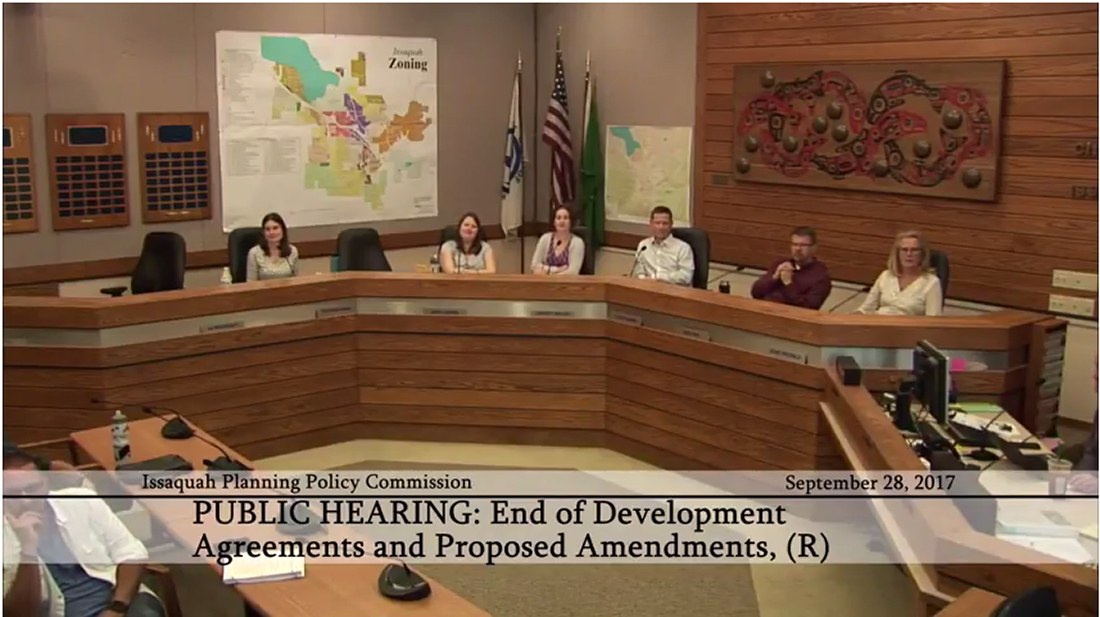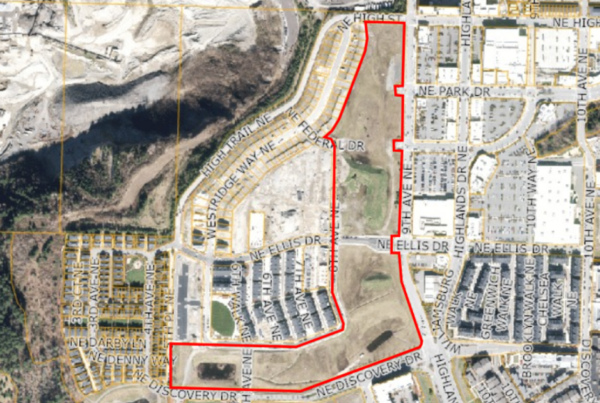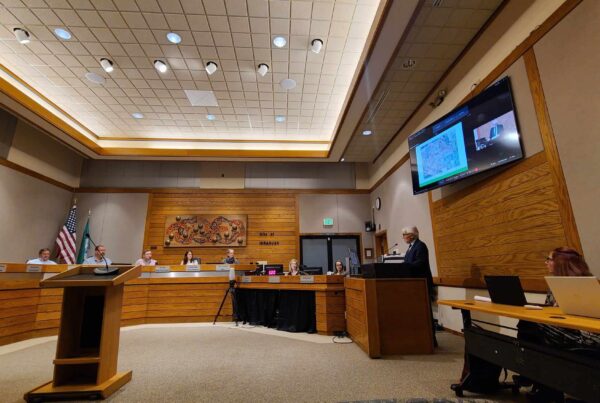
By Nina Milligan, Highlands Council, Communications Manager
At their regular meeting on September 28th, the City of Issaquah’s Planning Policy Commission (PPC) recommended approval of the administration’s plan to replace Issaquah Highlands Development Agreement (DA).
For over twenty years, development in the Highlands has been governed by a Development Agreement (DA), a contract between Port Blakely Communities and the City of Issaquah. The DA set forth land use and building standards including the number of houses, building design, sustainability, housing affordability, pedestrian-friendly infrastructure, parks and more. The term of the DA was 20 years. When it is terminated at the end of this year, city zoning and code will govern future development in the Highlands.
The Planning Policy Commission voted unanimously to recommend the City Council approve the administration’s plan to retire the Development Agreement and replace it with regulations from the Issaquah Municipal Code, the Central Issaquah Development and Design Standards and create a permanent place in city code for the Issaquah Highlands founding goals, guidelines and standards. The administration’s plan has evolved over six months of public process.
Along the way, City staff has adapted the proposal to better align outcomes with Issaquah Highlands’ original vision and goals. One key Issaquah Highlands vision was to become a pedestrian-friendly community where we can walk to and within our village center. To direct future development (and redevelopment) toward this vision, development services staff recommended adding a Floor Area Ratio (FAR) minimum to the regulations that replace our DA. They propose a minimum FAR of 1.0.
Minimum FARs are employed in hopes of preventing against strip mall, suburban development. Central Issaquah has a minimum FAR as a key element to direct new development to replace parking lot dominant retail with walkable, dense neighborhoods. 75% of Central Issaquah is parking lots. Surface parking drives destinations apart from one another, creating auto-zones that are not pedestrian-friendly.
After a lengthy consideration, the commission unanimously agreed.
Commissioner, and Issaquah Highlands resident, Lindsey Walsh queried, “I am generally in support of moving to this vision,” but why a minimum FAR of 1.0?
Consultants say Issaquah is not market-ready for dense, urban development. Even efforts to replace Central Issaquah’s current parking-heavy environment are challenging, let alone prevent such car-dependent development in the future. That’s why Central Issaquah employs FAR minimums, as do Issaquah’s newer Development Agreements.
Commission Vice Chair Ron Faul implored his fellow commissioners, “Don’t be shortsighted by today’s market. If we hold out today, we might get what we really want tomorrow.”
While commenting that Grand Ridge Plaza ended up as single story retail with mostly surface parking, Commissioner AJ McGauley said, “I agree. Let’s put in requirements that make development denser.”
Also in support of the FAR minimum, Commissioner Joy Lewis affirmed, “We know where we have been and we know where we want to go.”
The other topic of remaining concern was tree retention. During the “build out period” of Issaquah Highlands and Talus, builders were allowed to remove 100% of the trees to develop the land. Since forested hillsides have long been a protected “treasure” of Issaquah, there was every expectation that the hillside urban villages of Talus and Issaquah Highlands would be re-treed in the long term.
“You won’t see the houses,” Planning Policy Commission Chairperson Joan Probala remembered she was told by Talus visionaries some twenty some years ago.

City of Issaquah
Land and Shore Committee
Thursday, October 5th, 6:30pm
City Hall, Council Chambers
Agenda Item:
End of Development Agreements
“No Issaquah code allows tree removal for views,” Keith Niven, Director of Issaquah’s Department of Development Services cautioned. This means that as trees grow in the Highlands, as they did after homes were built on Squak Mountain, many current views will disappear. (However, several Issaquah Highlands properties have “view covenants”. See sidebar.)
Now that the Planning Policy Commission has reviewed and approved the end of the Development Agreement proposal, it moves to the City Council. The Commission instructed the staff to report to the Council their support for a minimum FAR and for tree retention regulations.
The City of Issaquah, City Council Land and Shore Committee meets on Thursday, October 5th, 6:30pm at City Hall, Council Chambers. They will begin their review of the administration’s plan, a process that is expected to last into November.
IH View Covenants: There are a few properties in Issaquah Highlands that have covenants on them that require homeowners to limit vegetation so that views of others are not blocked. These are on the title records for several homes in the Harrison Streets neighborhood, plus some homes along 25, 28th and 30th. These view covenants are not affected by the end of the Development Agreement.




